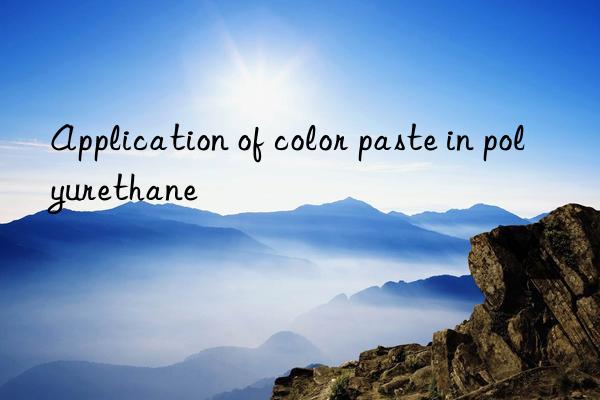
Polyurethane has good dyeability. By adding dye or color paste (color paste), polyurethane products with the desired color can be manufactured, such as colored polyurethane soft foam/elastomer/synthetic leather, etc.
In addition to using color to provide functional effects, the following are also available for dyeing polyurethane foam: Function: 1) Adding color paste consistent with the paint color of the furniture into the PU imitation wood furniture can cover up the paint peeling off during transportation and use of the furniture. The emergence of "whitening" phenomenon, thus increasing the product grade and its market competitiveness; 2) Use different colors to distinguish polyurethane soft foams of different densities and different functions. Different colors and depths represent different densities, or flame retardant sponges, Or antistatic sponge; 3) "Hide" the yellowing phenomenon of polyurethane materials. Most polyurethane materials are made from aromatic diisocyanates TDI, MDI and PAPI as the main raw materials. The presence of aromatic urethane groups causes polyurethane to turn yellow under long-term sunlight exposure. The yellowing of polyurethane products can be obscured or imperceptible by adding appropriate amounts of brown, red, yellow and black, thereby minimizing the negative effects.
Due to the high activity of the polyurethane reaction systemNCO group, so pay attention to whether there are functional groups or compounds in the color paste that easily react with polyurethane raw materials and lose the coloring effect, as well as the acid and alkali resistance, oxidation resistance, heat resistance, light resistance, and coloring properties of the color paste properties, water resistance, solvent resistance and price, etc. It is best to choose whether the color paste is suitable for polyurethane systems through experiments. The color paste should be easily dispersed in the components and can withstand the processing temperature. It should have as little impact on the material properties as possible and no color shift or precipitation will occur. The amount of color paste can be large or small, and it is easy to adjust.
In order to facilitate the use and better dyeing effect, the color paste is generally pre-dispersed and Dissolve in white ingredients.
Currently, the common color pastes on the market are mainly divided into two categories: dispersed colors Paste and reactive color paste:
Dispersed color paste: Dispersed color paste is The additive colorants we usually use are generally made by dispersing organic or inorganic pigments in polyurethane polyol. Generally speaking, organic pigments (dyes) have good dispersion and strong tinting power. After coloring, the polyurethane products are brighter in color and more expensive; inorganic pigments are lightfast and It has good temperature resistance, but the color is not as bright as organic pigments and the price is cheap.
Reactive color paste: it is a grafting reaction of dyes and polyether components. In the production process of foam plastics, it can react with isocyanate, so the dyeing is uniform and strong, and dark-colored foam plastics can be produced, which is beyond the reach of dispersed pigments. Since this type of dye contains a certain number of hydroxyl groups, it should be used in formula designConsider the need for isocyanate for these hydroxyl groups. But this type of reactive color
The price of dispersion color paste is often several times that of dispersed color paste times.
When we choose polyurethane color paste, we should also consider the following aspects:
1. Viscosity is an important indicator of color paste products. It is the most suitable viscosity for color paste products. The interval range is 2000--3000 mPa·s. Because experience shows that color pastes in this viscosity range have the most stable fluidity and dispersion, and are suitable for manual operation and machine head mixing;
2. For the polyurethane industry, the ideal fineness range of color paste is below 15 microns. If the fineness is too large, the pigment particles will have a "nucleation" effect during the foaming process of the product, thus It affects the structure of the cells and the surface of the product will also be rough. In addition, due to the poor color development of the color paste, the addition amount is increased;
3. The amount of color paste added should be controlled within 3% of the polyol, so that their impact on the formula can be ignored.
Although color paste occupies a small position in the production of polyurethane products, its role cannot be ignored, and it is also a rigid requirement of many customers, so choose a high-quality color Pulp is a powerful guarantee for improving competitiveness.

 微信扫一扫打赏
微信扫一扫打赏

